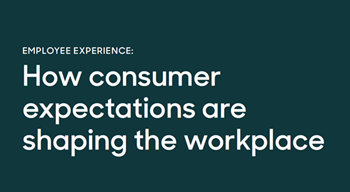We’ve all experienced the highs and lows of the shopping trip, what should be at best a pleasurable experience and at the very least a painless one, is often anything but. You set off full of anticipation having done your research and decided exactly which car, fridge or mobile phone you’re going for. But then it begins. Whether you’re buying in a shop or online you start to experience those annoying irritations that test your commitment to continue. It might be that the retailer is difficult to find, or that they take ages to answer the phone, or perhaps have an overly complicated website. There may be parking problems, or, when you walk through the door the sales team pounce on you immediately – or ignore you altogether. We all encounter moments like these that make us reconsider or even quit the buying process altogether. We call these moments ‘Tripping Points’.
Matching Customer Expectations
The brain seeks congruence and so tripping points will occur whenever reality doesn’t match our expectations. We will have a set of perceptions about our chosen product based on messages we have been previously exposed to which may have come from our own research, marketing campaigns or the views of our friends and family. If our experience, when we come into direct contact with the brand or product, doesn’t fit with what we expect then tripping points happen.
Crucially, this disconnect between expectations and reality that causes tripping points is not restricted solely to worse-than-expected experiences; any experience, even a positive one, that is at odds with the perception can trigger a tripping point - and potentially a negative response. This has serious implications for the whole ‘surprise and delight’ approach to customer experience; yes, you want your customer to have a pleasurable experience, but what if providing free gifts and services actually causes a negative response rather than the warmth and loyalty they are intended to engender in the customer? Brands and retailers should focus on setting accurate customer expectations and then simply matching them.
Reducing Customer Stress
The shift in attention triggered by tripping points activates an unavoidable cascade of physiological and neurological responses that the customer experiences as stress, and so must actively overcome. Just one tripping point can cause stress; several will have a cumulative effect and heighten that feeling of unease. The natural ‘fight or flight’ response, activated by stress will at best make your customer uncomfortable, and at worst, if the stress reaches an unacceptable level, they won’t buy from you.
Furthermore, the level of stress that a customer is willing to tolerate (either consciously or unconsciously) is dictated by how much they want and need the product or service. So, you can ‘buy’ tripping point tolerance by presenting an irresistible offer. But, conversely, the need for inducements is reduced if stress levels caused by tripping points are minimised – or removed.
Tripping points may be the result of the sales process; the environment (both real and virtual), and/or behaviour of customer facing staff. Some tripping points may be obvious, for example an overly complicated pricing structure, others may appear trivial, such as whether a sales person smiles or not. But all tripping points matter – and the more tripping points a customer encounters the more likely they are to walk away.
Some tripping points are easy to eliminate; some are unavoidable (e.g. mandatory finance documents) and will need to have their impact ‘softened’, but all should be addressed to increase the likelihood of a profitable sale.
The cause and impact of tripping points may not be obvious and often it is our unconscious brain that is reacting, so the customer may never really know why they responded in a certain way. This renders customer questionnaires of little value - if customers don’t know why they reacted as they did, they can only provide a rationally-filtered response that may have little or no bearing on the actual reason.
Finding and Fixing Tripping Points
Fortunately, the advance of scientific knowledge about human decision making means that we can now identify tripping points as they happen and measure the stress levels they induce. We use psycho-physiological research to reveal the tripping points coupled with video and audio monitoring to identify exactly what causes them. From this we create a Tripping Point Index - a scientific analysis of the customer’s experience providing objective measures of stress compared with data from customer journeys in that specific environment. The Tripping Point Index can also calculate how much each tripping point matters to the overall customer experience – and therefore how likely it is to hamper the sales process.
While tripping points can occur in any aspect of the customer experience, those that concern customer facing staff offer the best starting point for optimising customer service as the Tripping Point Index highlights opportunities to enhance and improve staff performance.
Clearly not all staff may be causing tripping points – or the same tripping points, so any training programme must be based on individual need. Analysis of the emotional, motivational and functional intelligence of customer-facing employees and their levels of resilience to stress should be used to inform the design and delivery of training programmes.
Customer facing staff should be coached to better understand psychology and human behaviour and also to develop their emotional intelligence to help them determine why customers may be feeling or behaving in a certain way and how best to respond.
Sales staff must be encouraged to think independently and to treat every customer as an individual. Customer facing staff will have no idea of what has been happening to a customer prior to them entering the retail environment or how many tripping points they may already have experienced. It’s vital sales staff are conscious of this as they have the power to reverse bad impressions.
Over several years of research for our clients we have identified many and varied tripping points, but whatever their nature, the evidence is clear: by finding and fixing the tripping points in your business you will increase sales, profit, customer retention, staff retention and productivity.
Access the latest business knowledge in Marketing
Get Access





Comments
Join the conversation...